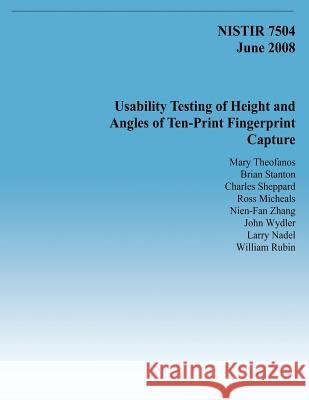Usability Testing of Height and Angles of Ten-Print Fingerprint Capture » książka
Usability Testing of Height and Angles of Ten-Print Fingerprint Capture
ISBN-13: 9781495435614 / Angielski / Miękka / 2008 / 42 str.
The Department of Homeland Security (DHS) and the United States Visitor and Immigrant Status Indicator Technology (US-VISIT) program is preparing to transition from a two print capture process to a 10-print slap capture process. In preparing for the 10-print pilot testing, a concern that the existing counters that house the fingerprint scanners are too tall to support the ten print collection process was identified. Lowering the counters in the facilities is not possible for the pilot testing. However, angling the scanners on the counter may alleviate the problems. US-VISIT asked the National Institute of Standards and Technology (NIST) Biometrics Usability team to examine the impact on fingerprint capture performance of angling the fingerprint scanners on the existing counter heights to accommodate the upcoming pilot testing. The NIST Biometrics Usability group's study1 was specifically designed to answer the question: Given the current counter heights in US-VISIT facilities, what is the "best" angle to position the fingerprint scanner? The study included three metrics: 1. Efficiency - the time to complete the tasks. Does the angle of the fingerprint scanner affect the time required to capture fingerprint images? 2. Effectiveness - how good are the prints? Does the angle affect the quality of the captured images? 3. Satisfaction - comfort. Do users prefer a particular fingerprint scanner angle?
Zawartość książki może nie spełniać oczekiwań – reklamacje nie obejmują treści, która mogła nie być redakcyjnie ani merytorycznie opracowana.











